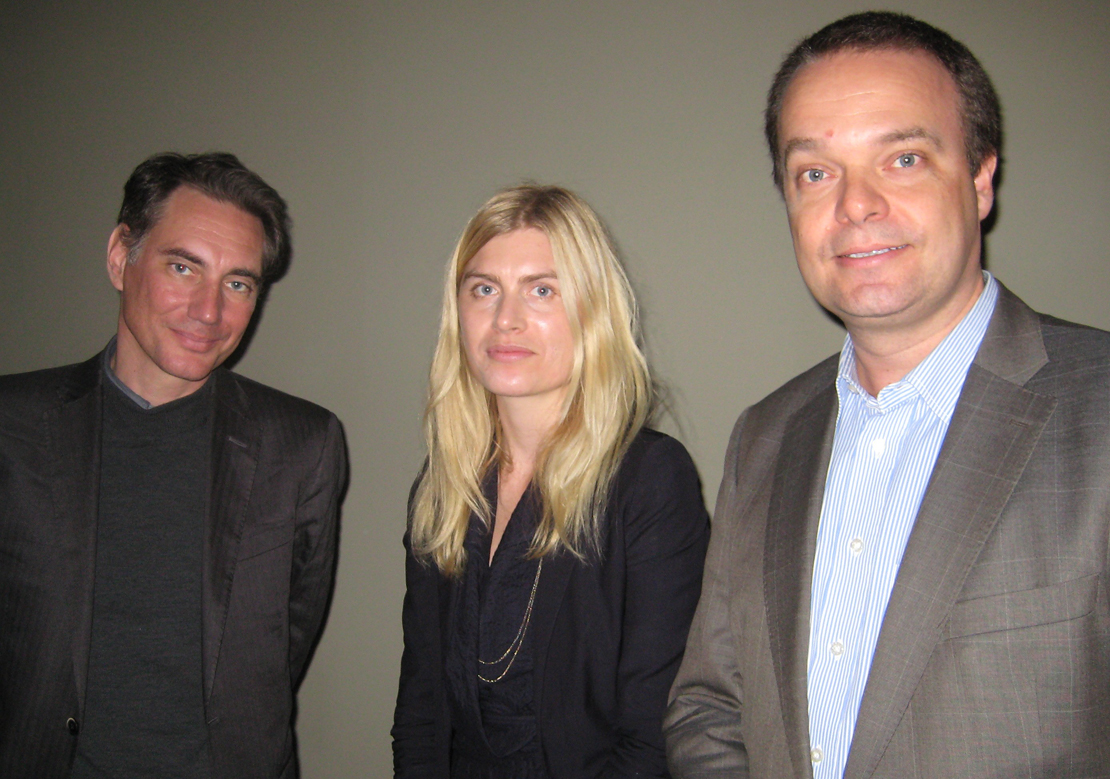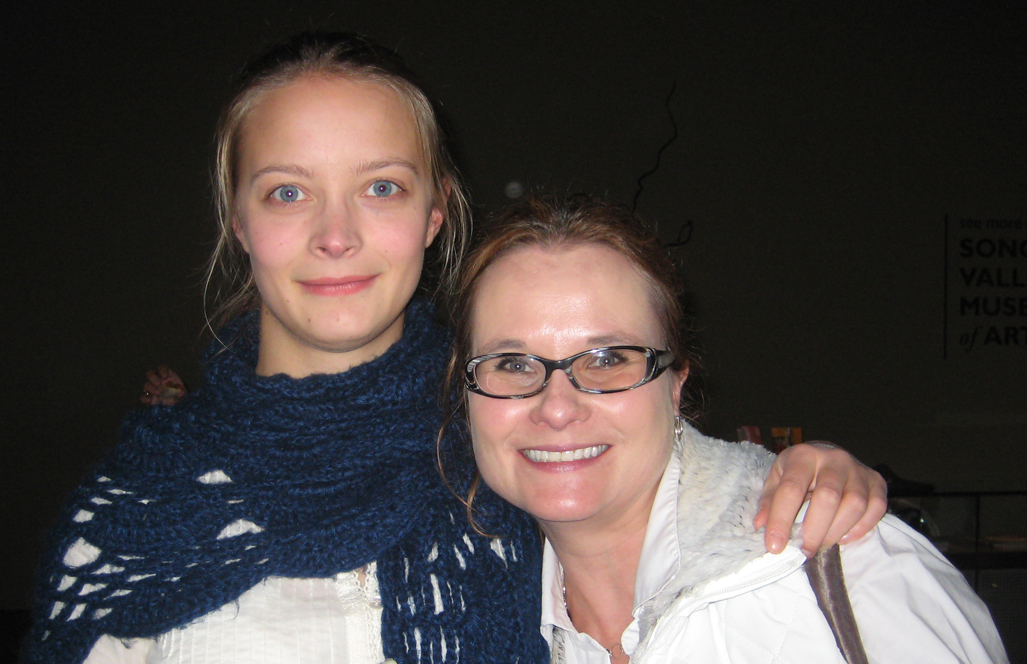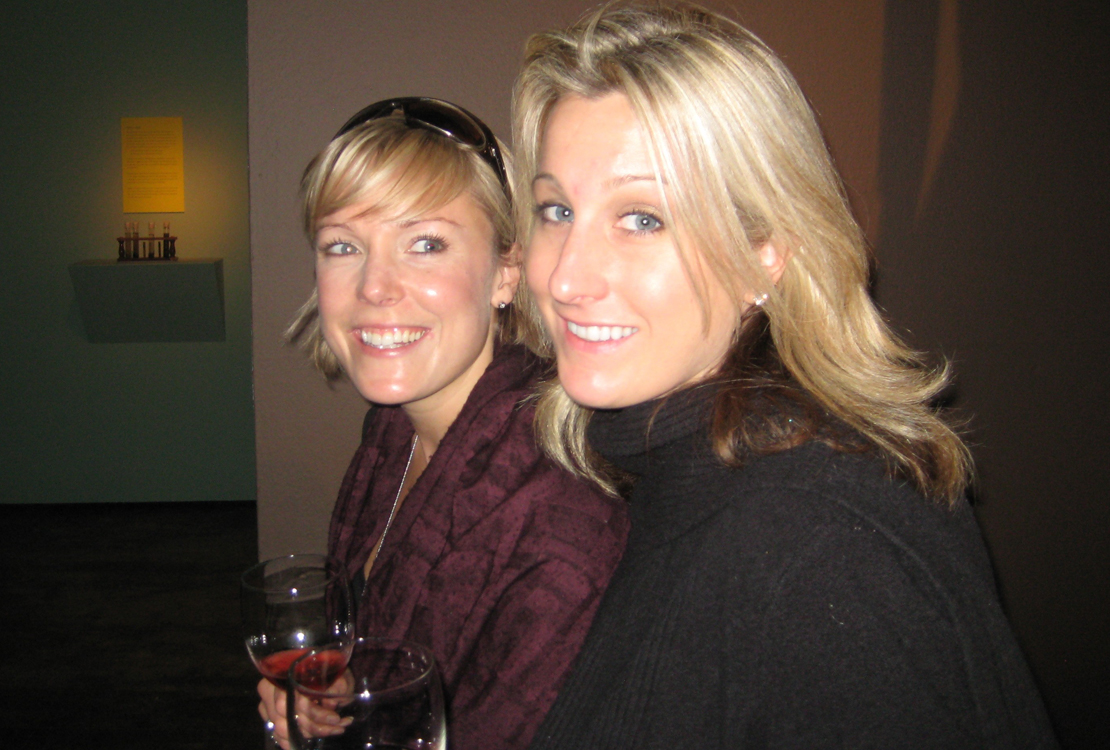Eco friendly, fashionabe and profitable.
The exhibition Eco Chic: Toward Sustainable Swedish Fashion opened at Sonoma Valley Museum of Art in Sonoma, California.
-
 David Nordfors, PHD, Executive Director, Stanford H-Star Institute, Kajsa Gutestam Swedish Institute, and Sven Otto Littorin, Stanford H-Star Institute.
David Nordfors, PHD, Executive Director, Stanford H-Star Institute, Kajsa Gutestam Swedish Institute, and Sven Otto Littorin, Stanford H-Star Institute. -
-
Swede Annika Axelsson founded Dem Collective with Karin Stenmar in 2004. Axelsson was present for the exhibition opening and spoke about how the company got its start during a passionate speech about her beliefs that a company can think of the environment and human rights and still be profitable.
-
 Barbro Osher, Consul General of Sweden, San Francisco and Annika Axelsson, Dem Collective.
Barbro Osher, Consul General of Sweden, San Francisco and Annika Axelsson, Dem Collective. -
-
“It started when I was 13 years old and went on a trip to Bali and saw a garment factory,” Axelsson said. She could not believe how inhumane the conditions were for the women working there. Back in Sweden, she told her parents that she would never again buy new clothing until the working conditions changed in the garment factories, and she started shopping from only second hand stores.
Eventually Axelsson and Stenmar started Dem Collective, the first company to guarantee eco-friendly products and that everyone in the process—from the first step to the last—works under humane conditions, receives living wages (not just minimum wages), and has the right to organize in unions.
Axelsson had noticed that all organizations in Sweden and other countries working for human and children’s rights or the environment often used printed T-shirts as a way of spreading their message, but no one ever thought of how those T-shirts were produced. Stenmar and Axelsson looked all over the world for a truly eco-friendly produced product. Nothing turned up, so they started looking for growers that grew cotton ecologically. They found one in India. -
 Inger Skogström, Anne-Marie Nordquist both SWEA SF, Annika Axelsson, Dem Collective, and Carina Hannus, Church of Sweden San Francisco.
Inger Skogström, Anne-Marie Nordquist both SWEA SF, Annika Axelsson, Dem Collective, and Carina Hannus, Church of Sweden San Francisco. -
Finding cotton, finding a factory
They visited the grower to make sure everything was as described and to see the working conditions. The plan was to order cotton for 200 T-shirts but as it turned out the minimum quantity was one ton of cotton. They had to find a factory that could produce their T-shirts and went to Sri Lanka, the only Asian country that had signed some rights for workers. In Sri Lanka they found no factory had anything near humane working conditions. The women in the garment factories usually worked up to 18 hours a day, seven days a week.
Through a local contact they found a woman that had worked for many years in the factories but had recently been fired for standing up for her fellow workers’ rights. They set up a meeting with her and two friends. With the three ladies Axelsson and Stenmar stipulated how a new factory would have to work: Living wages meant wages that supported a decent living; a 40-hour work week limit; the right to organize for workers' rights; and, workers' rights for everyone to have a say in the company. The new company was set up in the women's village rather than near the shipping areas where most factories traditionally are. -
 Katarina Sagerström and Lisa Piroska both Conulate General of Sweden.
Katarina Sagerström and Lisa Piroska both Conulate General of Sweden. -
'It is possible to be.. good'
Now, a few years later, Axelsson and Stenmar have proven that a garment company can be eco friendly, offer good working conditions and quality, fashionable products, and also be profitable. For the founders the important thing is to make a little difference both to the environment and in a few women’s lives.
The fashion exhibition was produced by the Swedish Institute in collaboration with The Consulate General of Sweden, San Francisco and Sonoma Valley Museum of Art. The representative for the Swedish Institute was Kajsa Gutestam and for the Sonoma Valley Museum of Art, executive director Kate Eilertsen.
Refreshments were served after presentations and everyone got the chance to talk to Axelsson, mingle and of course go through the exhibition with all the fashionable clothing from 13 different Swedish designers that has used only eco-friendly materials. -
 Swedish Hermine Baker brought her friend Kara Lyons.
Swedish Hermine Baker brought her friend Kara Lyons. -
The exhibition showcases Swedish fashion designers who take an environmentally-friendly and ethical approach to their work without sacrificing style. For more info, see Sonoma Valley Museum of Art
The exhibition previously showed at Scandinavia House in New York; here is what we wrote about the show and other exhibited designers: www.nordstjernan.com/news/east/2137 or
www.nordstjernan.com/news/east/2221 -
-
